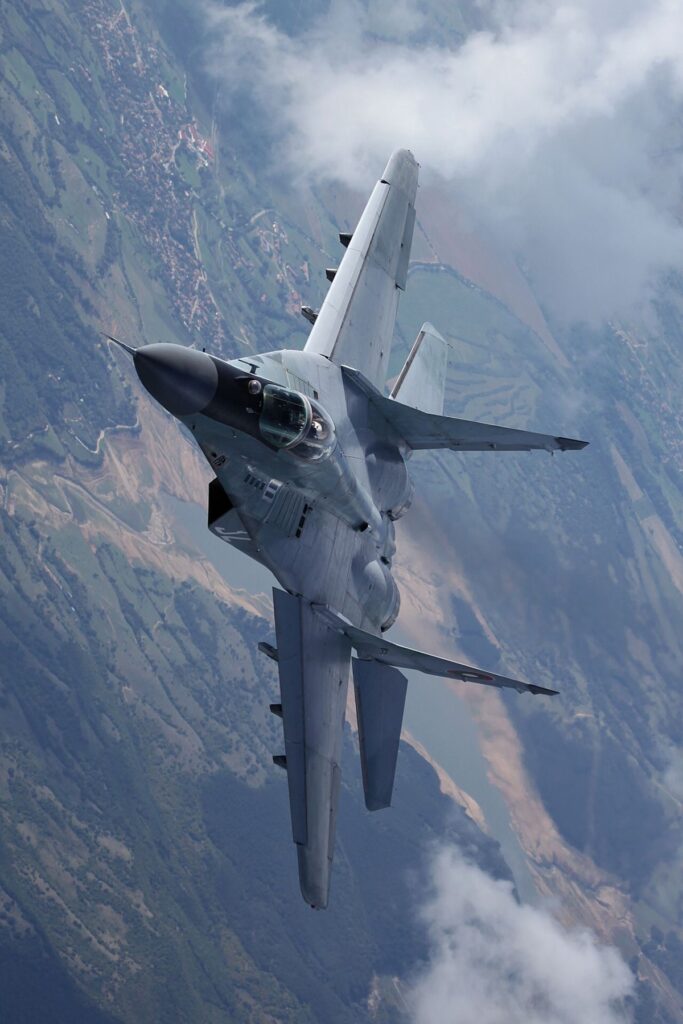
The MiG-29, developed by the Soviet Union in the late 1970s, stands as one of the most iconic fighter aircraft of the Cold War era. Officially entering service in the early 1980s, it was designed to counter Western fourth-generation fighters such as the American F-15 Eagle and F-16 Fighting Falcon. What set the MiG-29 apart from many of its contemporaries was its remarkable maneuverability, a feature that earned it both admiration and respect among aviation experts and pilots around the world.
At the heart of the MiG-29’s reputation is its aerodynamic design. The aircraft features a blended wing-body configuration with leading-edge root extensions (LERX) that generate additional lift at high angles of attack. This allows the fighter to perform aggressive maneuvers without losing stability, even in extreme conditions. Coupled with its powerful twin Klimov RD-33 turbofan engines, the MiG-29 can achieve a thrust-to-weight ratio close to one-to-one, giving it excellent acceleration and climb performance. In a dogfight scenario, this meant the MiG-29 could rapidly change direction and sustain tight turns, giving pilots a decisive edge in close-range engagements.
The agility of the MiG-29 was further enhanced by its ability to maintain controlled flight at very high angles of attack. Soviet engineers placed great emphasis on designing an aircraft that could dominate within visual range combat, where maneuverability was often the deciding factor. Western pilots who had the opportunity to fly or train against the MiG-29 frequently noted its ability to out-turn many of their own aircraft in mock engagements. This reputation was not just theoretical; in real-world exercises, the MiG-29 proved it could hold its own against some of the best fighters in NATO’s inventory.
One of the most distinctive features complementing its maneuverability is the helmet-mounted sight system, which was revolutionary at the time of its introduction. This allowed pilots to lock onto targets simply by looking at them, rather than having to point the entire aircraft in their direction. Combined with the agile R-73 short-range air-to-air missile, the MiG-29 could engage opponents at extreme off-boresight angles, maximizing the effectiveness of its close-combat agility. This pairing gave the fighter a lethal reputation during the late Cold War and beyond.
Despite its impressive performance, the MiG-29 was not without limitations. Its relatively short combat range and modest avionics compared to Western fighters meant that its strengths were heavily focused on short, intense engagements rather than long-duration missions. Nevertheless, for countries seeking a capable and affordable air superiority platform, the MiG-29 proved to be an attractive choice. It was exported widely, serving with air forces across Eastern Europe, Asia, Africa, and the Middle East, where its agility continued to be a defining characteristic.
Today, while newer fifth-generation fighters have taken the stage, the MiG-29 remains in service in many nations, often upgraded with modern avionics and weapon systems. Its legacy as one of the most maneuverable fighters of its time endures, cementing its place in aviation history. For many, the MiG-29 symbolizes the Soviet emphasis on raw aerodynamic performance and the enduring importance of agility in aerial combat.


